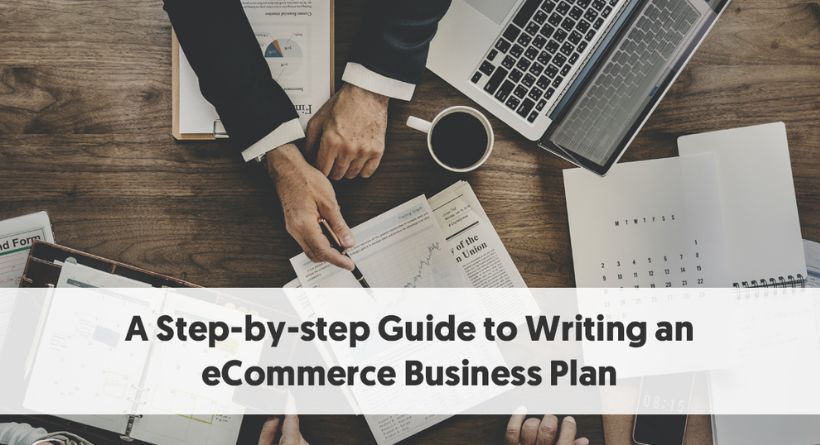Are you ready to embark on the exciting journey of launching your own ecommerce business? Congratulations! Starting an online store can be a highly rewarding venture, but it requires careful planning and strategic decision-making. One crucial step in laying the foundation for your ecommerce success is to create a well-crafted business plan tailored specifically for your online store. In this blog post, we will delve into the intricacies of writing an ecommerce business plan and provide you with invaluable insights to help you chart a course for sustainable growth and profitability.
Before we dive into the solution, let’s acknowledge a common challenge faced by aspiring ecommerce entrepreneurs: the lack of a comprehensive business plan. It’s not uncommon for individuals to jump headfirst into the world of online selling without a clear roadmap, resulting in haphazard decision-making, missed opportunities, and potential pitfalls along the way. Recognizing the significance of a well-structured business plan is the first step toward building a solid foundation for your ecommerce venture.
Rest assured, we understand the importance of overcoming this obstacle, and that’s why we are here to guide you through the process of creating an effective ecommerce business plan. Our aim is to equip you with the knowledge and tools necessary to develop a roadmap that aligns with your goals, maximizes your resources, and positions your online store for long-term success.
In this comprehensive guide, we will break down the key components of an ecommerce business plan and walk you through each step of the process. From defining your target market and conducting competitive analysis to crafting a compelling value proposition and developing a marketing strategy, we’ve got you covered. Our expert advice and practical tips will empower you to make informed decisions and navigate the complexities of the ecommerce landscape.
We understand the pain points you face when trying to write an ecommerce business plan. The prospect of compiling extensive market research, financial projections, and operational strategies can feel overwhelming. However, with our step-by-step approach and actionable insights, you’ll find that the process becomes more manageable and less intimidating.
Key Components of an Ecommerce Business Plan

A. Defining your target market and customer personas
To create a successful ecommerce business plan, you must start by clearly defining your target market and understanding your ideal customers. Who are they? What are their needs, preferences, and pain points? By delving deep into the demographics, psychographics, and behavior of your target audience, you can tailor your products, marketing messages, and overall business strategy to resonate with them.
To illustrate, let’s say you’re planning to launch an online store that sells premium athletic footwear. Your target market might consist of health-conscious individuals who prioritize quality, performance, and style. Understanding this, you can craft your business plan to highlight the unique features and benefits of your footwear, positioning it as the go-to choose for fitness enthusiasts who value both functionality and aesthetics.
B. Conducting competitive analysis
Competitive analysis is a vital step in developing an ecommerce business plan. It allows you to gain insights into your competitors, identify their strengths and weaknesses, and uncover opportunities for differentiation. By thoroughly researching and analyzing the competitive landscape, you can identify gaps in the market and develop strategies to outperform your rivals.
For instance, suppose you discover that several established ecommerce footwear brands dominate the market you plan to enter. Through competitive analysis, you may find that they primarily focus on performance-driven features but overlook sustainable materials and eco-friendly manufacturing practices. This knowledge presents an opportunity for your business to stand out by emphasizing sustainability and appealing to environmentally conscious consumers.
C. Crafting a unique value proposition
In the fiercely competitive ecommerce industry, having a compelling value proposition is essential for capturing the attention and loyalty of your target audience. Your value proposition is a concise statement that communicates the unique value your online store offers to customers. It should clearly articulate why someone should choose your products or services over those of your competitors.
Let’s continue with the example of your premium athletic footwear store. Your value proposition could be something like, “We combine cutting-edge technology, innovative design, and sustainable materials to deliver performance-enhancing athletic footwear that doesn’t compromise on style. With our products, you can look good, feel good, and make a positive impact on the environment.”
D. Developing a marketing strategy
A well-defined marketing strategy is crucial for attracting and engaging your target audience. Your ecommerce business plan should outline the specific tactics and channels you will use to reach your customers effectively. Consider both online and offline marketing avenues, such as social media advertising, influencer partnerships, content marketing, email campaigns, search engine optimization (SEO), and more.
Continuing our athletic footwear store example, your marketing strategy might involve collaborating with fitness influencers on Instagram to showcase your products and reach health-conscious consumers. Additionally, you might invest in SEO strategies to ensure your website ranks highly in relevant search results when potential customers are searching for athletic footwear online.
E. Establishing financial projections and budgeting
No ecommerce business plan is complete without a thorough analysis of your financial projections and budget. This section outlines your expected revenue streams, expenses, and profitability over a specified period. It helps you determine the financial viability of your venture, allocate resources effectively, and set realistic growth targets.
When creating financial projections for your athletic footwear store, consider factors such as product costs, marketing expenses, operational costs (such as website maintenance and inventory management), shipping fees, and customer acquisition costs. By accurately forecasting your finances, you can make informed decisions, secure funding if needed, and ensure long-term sustainability for your ecommerce business.
F. Outlining operational strategies and logistics
Efficient operational strategies and logistics are the backbone of any successful ecommerce business. In this section of your business plan, you’ll outline the processes and systems you’ll put in place to handle inventory management, order fulfillment, shipping, customer service, and other crucial operational aspects.
Consider the entire customer journey, from the moment they land on your website to the final delivery of their purchased products. Implementing a smooth and seamless experience at each touchpoint will not only enhance customer satisfaction but also increase the likelihood of repeat business and positive word-of-mouth.
Next, we’ll move on to the step-by-step guide to writing an ecommerce business plan, where we’ll explore each stage in detail and provide you with practical tips and insights to ensure your plan’s success.
Also Read: Journaldunet.com : Minimum Wage 2023: Its new amount since May 1st, 2023.
Step-by-Step Guide to Writing an Ecommerce Business Plan

Writing an ecommerce business plan is a crucial step towards setting up a successful online store. It serves as a roadmap that outlines your goals, strategies, and financial projections. By following a step-by-step approach, you can ensure that your business plan covers all the essential aspects required for a thriving ecommerce venture. Let’s delve into each step-in detail.
A. Conducting market research
Market research is the foundation of any effective business plan. It helps you gain a deep understanding of your target market, identify customer needs and preferences, and assess the demand for your products or services. Start by examining the size of your target market and its growth potential. Look into consumer demographics, behavior patterns, and purchasing trends. Analyze market gaps and opportunities that you can leverage to differentiate your business.
B. Identifying your target audience
Knowing your target audience is crucial for tailoring your ecommerce business to their needs. Consider their age, gender, location, interests, and online behavior. Create buyer personas that represent your ideal customers and describe their characteristics and motivations. Understanding your target audience will help you craft effective marketing messages and tailor your product offerings to meet their specific requirements.
C. Analyzing competitors and market trends
Competition in the ecommerce industry can be fierce. Analyzing your competitors allows you to identify their strengths, weaknesses, and unique selling propositions. Study their pricing strategies, product range, marketing tactics, and customer reviews. This information will help you position your business in a way that differentiates it from competitors. Additionally, keep a close eye on market trends, technological advancements, and changes in consumer preferences. Adapting to these trends will keep your business ahead of the curve.
D. Defining your brand identity and positioning
Your brand identity is what sets your ecommerce business apart from others. Define your brand values, mission, and vision. Craft a compelling brand story that resonates with your target audience. Determine your brand personality and how you want customers to perceive your business. Clearly articulate your unique selling propositions (USPs) and what makes your products or services better than those of your competitors. Your brand identity and positioning should be reflected consistently in your website design, product descriptions, and marketing materials.
E. Setting clear business objectives and goals
To drive your ecommerce business forward, you need clear objectives and goals. Your objectives should be specific, measurable, attainable, relevant, and time-bound (SMART). For example, a goal could be to increase website traffic by 20% within six months or to achieve a certain revenue target by the end of the year. These goals will help you track your progress and make informed decisions to optimize your business operations.
F. Creating a sales and marketing strategy
Developing a robust sales and marketing strategy is crucial for attracting and retaining customers. Determine the most effective channels to reach your target audience, such as social media, email marketing, or search engine optimization (SEO). Craft a compelling value proposition and messaging that resonates with your target customers. Set a budget for advertising and promotions and explore various marketing tactics to drive traffic and conversions.
G. Establishing a financial plan and forecasting
A sound financial plan is essential for the long-term success of your ecommerce business. Determine your startup costs, including website development, inventory, marketing, and operational expenses. Create a sales forecast based on your market research and pricing strategy. Project your revenue and expenses over a defined period, typically for the first three years of operation. This financial forecast will guide your decision-making and help you secure funding if needed.
H. Outlining operational logistics and fulfillment
Efficient operational logistics and fulfillment processes are critical for delivering an exceptional customer experience. Define how you will manage inventory, handle shipping and returns, and ensure timely order fulfillment. Explore partnerships with reliable suppliers and logistics providers to streamline your operations. Develop contingency plans to address unforeseen challenges and ensure smooth operations during peak periods.
By following this step-by-step guide, you can create a comprehensive ecommerce business plan that sets the stage for your online success. Remember, the process requires thorough research, careful analysis, and thoughtful decision-making. Now, let’s explore some tips and best practices to make your ecommerce business plan even more effective.
Tips and Best Practices for an Effective Ecommerce Business Plan

Now that you have a solid understanding of the step-by-step process for creating an ecommerce business plan, let’s explore some tips and best practices to enhance its effectiveness. By incorporating these strategies into your planning, you can increase the likelihood of achieving your business goals.
A. Utilizing data and analytics for informed decision-making
Data and analytics play a crucial role in the success of your ecommerce business plan. By leveraging tools like Google Analytics, you can gather valuable insights into customer behavior, website traffic, and conversion rates. Analyzing this data allows you to make informed decisions about marketing strategies, product offerings, and website optimization. For example, you can identify which marketing channels are driving the most traffic and conversions, or which products are the most popular among your target audience. By using data to inform your decisions, you can allocate resources effectively and maximize your return on investment.
B. Setting realistic and measurable goals
When setting goals for your ecommerce business, it’s important to strike a balance between ambition and achievability. Setting unrealistic goals can lead to frustration and disappointment, while setting goals that are too easily attainable may hinder your growth potential. Ensure that your goals are specific, measurable, and aligned with your overall business objectives. For instance, instead of setting a vague goal like “increase sales,” set a specific target like “achieve a 15% increase in monthly sales within the next quarter.” This way, you can track your progress and make adjustments to your strategies as needed.
C. Regularly reviewing and updating your business plan
An ecommerce business plan is not a static document. It should evolve and adapt to changes in the market and your business environment. Regularly review and update your plan to reflect new insights, market trends, and shifts in customer preferences. Consider conducting quarterly or annual reviews to assess the effectiveness of your strategies and identify areas for improvement. By staying proactive and agile in your approach, you can keep your business plan aligned with your goals and ensure its relevance in a dynamic marketplace.
D. Seeking feedback and guidance from mentors or experts
Don’t underestimate the value of seeking feedback and guidance from experienced mentors or industry experts. They can provide valuable insights, offer fresh perspectives, and help you identify blind spots in your business plan. Engage with professionals who have relevant expertise in ecommerce, marketing, or entrepreneurship. Share your business plan with them and ask for their input. Their feedback can help you refine your strategies, strengthen your value proposition, and avoid costly mistakes. Remember, seeking advice is a sign of strength, not weakness.
E. Adapting to market changes and evolving customer needs
The ecommerce landscape is constantly evolving, and customer preferences can change rapidly. To stay competitive, it’s crucial to adapt your business plan to market changes and evolving customer needs. Keep a close eye on industry trends, emerging technologies, and shifts in consumer behavior. Continuously assess the effectiveness of your strategies and be open to making adjustments when necessary. For example, if you notice a decline in the popularity of a certain product category, explore new opportunities or pivot your offerings to meet the changing demands of your target audience.
By incorporating these tips and best practices into your ecommerce business plan, you can enhance its effectiveness and increase your chances of building a successful online business. Remember, a well-crafted plan combined with data-driven decision-making and flexibility can pave the way for sustainable growth and profitability in the competitive world of ecommerce.
Conclusion
In conclusion, an ecommerce business plan is a fundamental tool for building a successful online venture. By following the key components and the step-by-step guide outlined in this article, you can create a comprehensive plan that sets a strong foundation for your business. Remember to conduct thorough market research, define your target audience, analyze competitors, and establish clear objectives. Utilize data and analytics to make informed decisions, regularly review and update your plan, and seek guidance from experts. Adapt to market changes and evolving customer needs to stay ahead of the competition.
Writing an ecommerce business plan may seem like a daunting task, but it’s a worthwhile investment of your time and effort. A well-crafted plan provides clarity, direction, and a roadmap to guide your decision-making. It helps you stay focused, make informed choices, and measure your progress. So, don’t hesitate to take action and start writing your own ecommerce business plan today.







